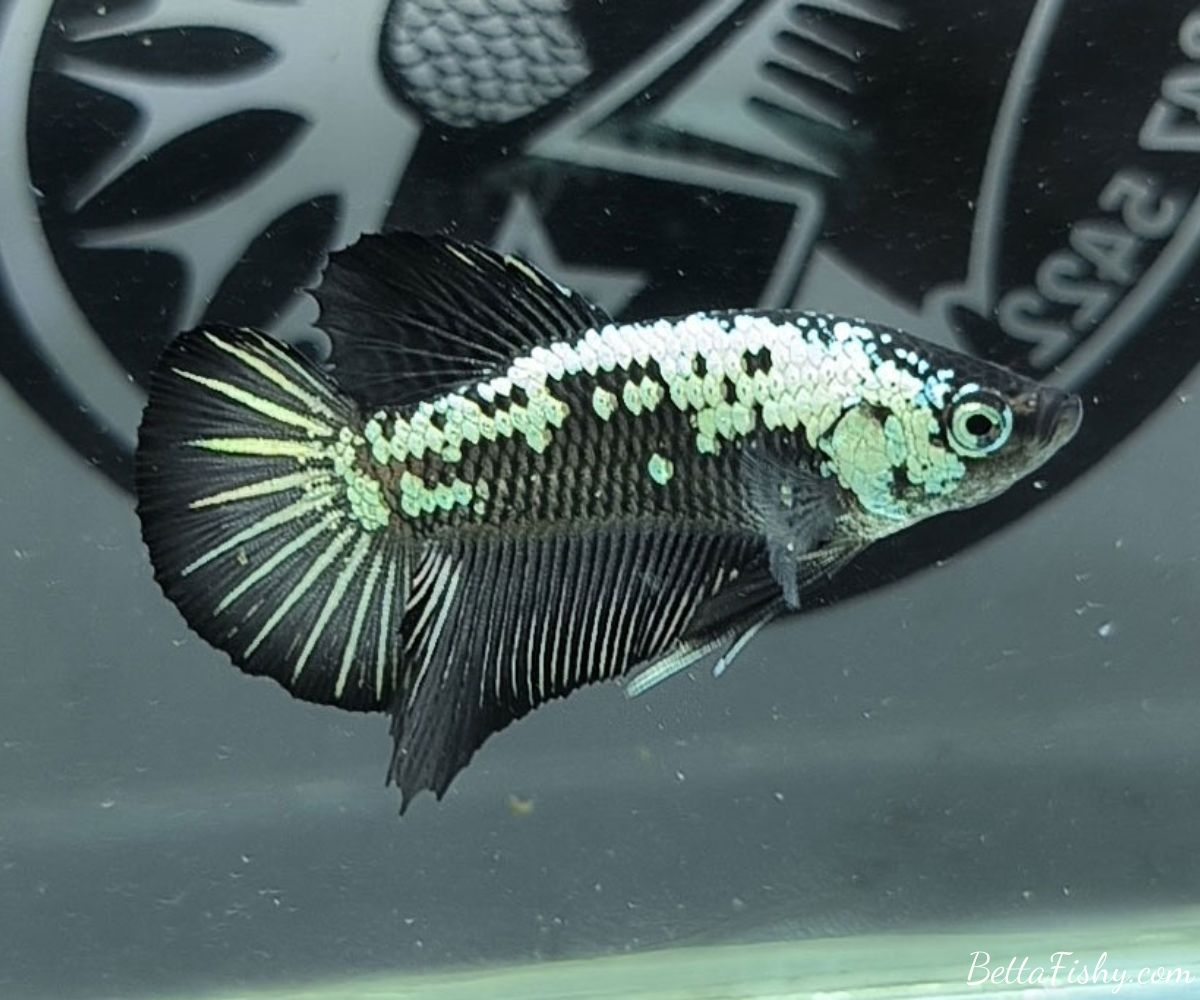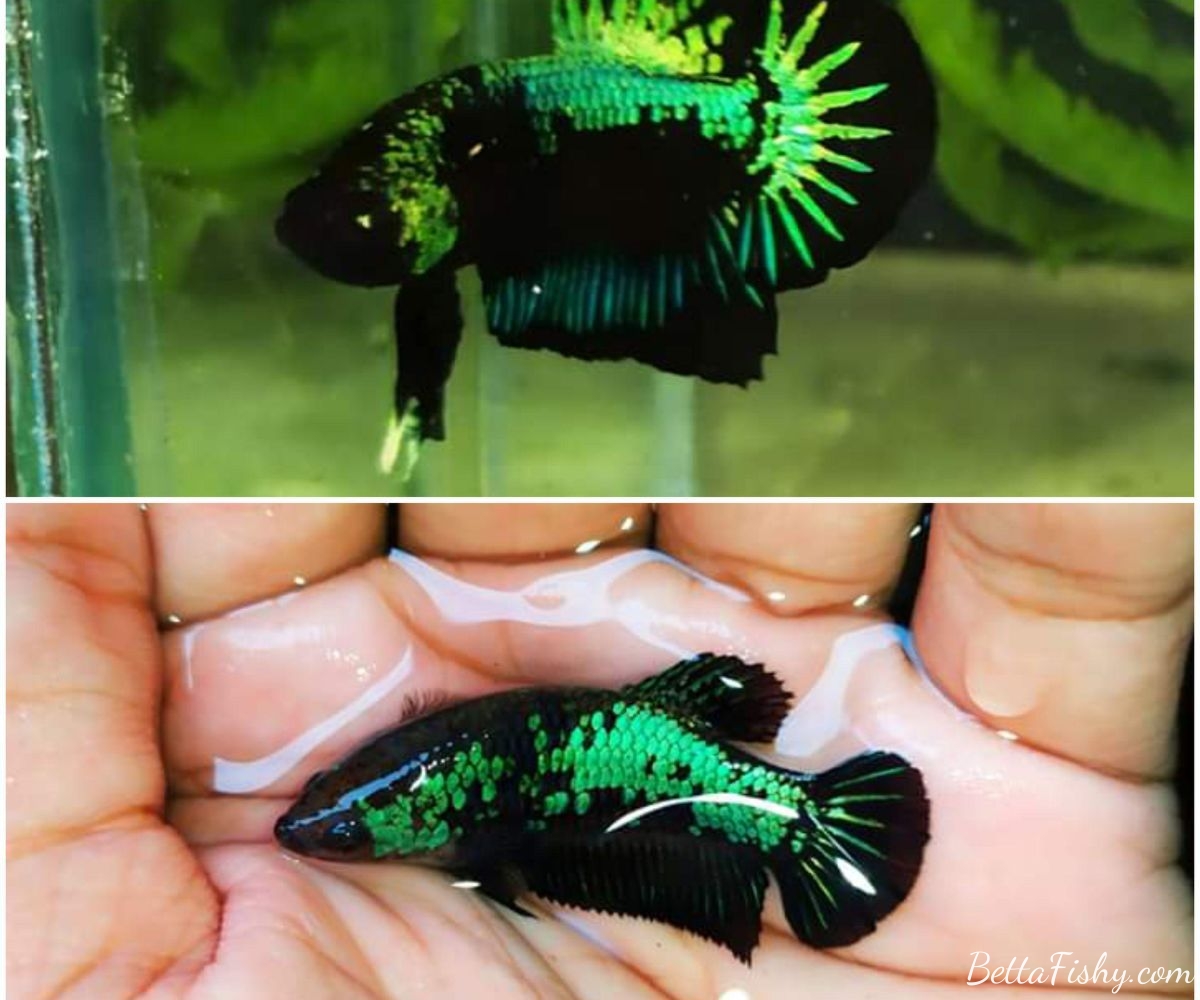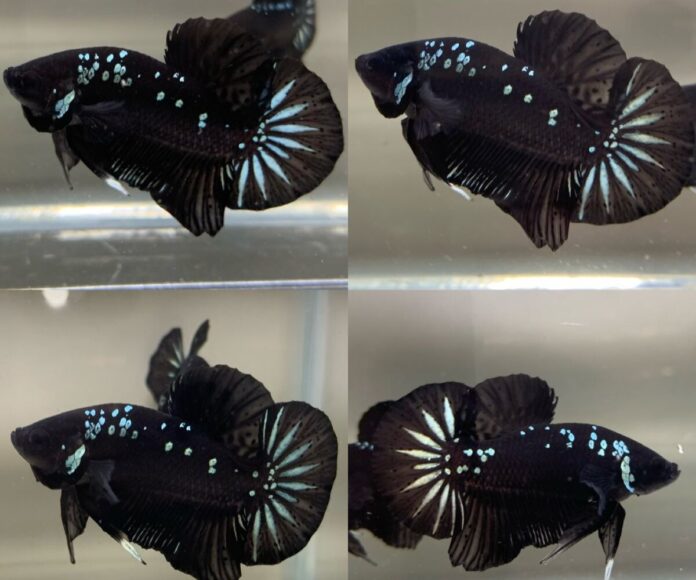Introduction
Betta fish, also known as Siamese fighting fish, are a popular freshwater aquarium fish native to Southeast Asia. There are dozens of different varieties of betta fish, differentiated by their spectacular fin shapes, scaling, coloration and patterns. Some of the most popular types include veiltail, crowntail, delta tail, and halfmoon bettas. Each variety has been selectively bred over many generations to achieve unique and exotic fin shapes and vibrant, metallic colors.
One particularly intriguing variety is the samurai betta fish. Named after the noble warriors of feudal Japan, the samurai betta is surrounded by history and myth. They are rumored to be more aggressive than other bettas and their name pays homage to the combative nature of Siamese fighting fish in general. Samurai bettas have a truly unique appearance featuring metallic scales and dramatic finnage. Their origins can be traced back decades to specialized breeding farms in Thailand. BettaFishy will unravel the history and facts around this legendary variety of betta fish.
Origins of the Samurai Betta Fish

The samurai betta traces its origins back to the Taphong Betta Farm in Thailand, where it was first developed through dedicated breeding efforts. The samurai betta variety resulted from years of selective breeding at the farm. The breeders at Taphong Betta Farm carefully chose bettas with desirable traits to breed together over multiple generations. This allowed them to gradually enhance certain characteristics and produce bettas exhibiting a “samurai” look.
While the samurai betta descended from regular betta splendens species, its distinct traits of metallic scales, sharp mask patterns, and dense finnage set it apart. The Taphong Betta Farm breeders noticed that certain bettas would occasionally produce offspring exhibiting these traits. They honed in on those bloodlines and selectively bred the fish to stabilize and amplify those features. After many years of dedication, the samurai betta as we know it today was born through this concentrated effort.
So while the samurai betta originated relatively recently compared to ancient natural betta species, it still took considerable time and care to develop this unique variety. The samurai is a testament to the possibilities that can emerge from selective breeding programs when expert breeders devote themselves to a vision. This is how the legendary samurai betta arose at a small farm in Thailand, through years of breeding the finest bettas expressing the qualities of a warrior.
How the Samurai Name Originated
The samurai betta fish gets its name from ancient Japanese samurai warriors. Samurai were known for their discipline, loyalty, and fighting skills. Similarly, betta fish have an aggressive and combative nature. They will often flair their gills, spread their fins, and charge at other bettas if housed together.
The samurai betta was first bred by Taphong Betta Farm in Thailand. The breeders noticed that these bettas had unique scales that resembled Japanese samurai armor. Their fierce behavior also reminded the breeders of samurai warriors. So they coined the name “samurai betta” due to the fish’s resemblance and temperament.
The connection to ancient Japanese warriors highlights the samurai betta’s regal yet aggressive nature. Their ornate scales and proud fins call to mind a warrior dressed for battle. While betta fish in general exhibit fighting instincts, the samurai variety epitomizes the combative spirit of these feisty fish.
Samurai Betta Fish Myths
There are some common myths and misconceptions surrounding samurai bettas. One of the most prevalent is that they are extremely rare or difficult to find. This myth likely stems from their exotic name, but samurai bettas have become more widely available in recent years as breeders have worked to produce more of them. While not as common as some other betta varieties in stores, they are certainly not as hard to locate as some may believe.
Another myth suggests that samurai bettas are more aggressive than other betta fish. However, there is no definitive evidence that samurai bettas are inherently more pugnacious or combative. Like all bettas, their temperament can vary, but samurais do not appear to be particularly more aggressive or hostile than other color variations.
Some other common myths are that samurai bettas require brackish water or special care, and that they are incompatible with other fish. In fact, they can do well in freshwater community tanks when properly introduced. With the right tank mates and conditions, samurai bettas can live peacefully with other fish. As with any betta, specialized care is not needed, just a general understanding of their needs.
Samurai Betta Appearance

Samurai bettas have a very distinct and eye-catching appearance. Their most defining feature is their metallic-looking scales that shine and shimmer under light. The majority of their body and fins are covered in these reflective scales that can range in color from silver and steel blue to copper and gold. The contrast of these shiny scales alongside more vibrantly colored fins and body sections is what gives samurai bettas their ornate look.
Underneath the metallic scales, samurai bettas exhibit a huge variety of colors and patterns. Their fins can display rich reds, purples, greens, blues, oranges, and yellows with striking contrasts between them. Popular variations include red or orange fins with steel blue bodies, and dark blue or purple fins with copper metallic scales. No two samurai bettas look exactly the same.
In terms of tail types, samurai bettas most commonly have broad delta tails or full, branching crowntails. Their fins are large and flowy. Even females can have particularly sizable fins and bright colors. Both males and females will have the iconic shiny scales covering their face and body.
Overall, the combined effect of their bold colors and gleaming metallic scales give samurai bettas a one-of-a-kind appearance befitting their legendary name and status among betta enthusiasts.
Samurai Betta Care

Like all betta fish, samurai bettas require certain care conditions to thrive. Proper tank setup and water quality are especially important.
Samurai bettas should be kept in at least a 5-gallon tank, with larger tanks of 10 gallons or more being ideal. The water should be kept between 78-82°F and have a pH between 6.8-7.6 . The tank should also be filtered and cycled before adding your betta. Perform regular partial water changes of 25-50% weekly.
Make sure decorations in the tank are smooth and free of sharp edges that could tear the betta’s flowing fins. Plants, rocks, driftwood, and cave hides can help enrich their environment. Tankmates can be added for a community tank, but should be peaceful species that won’t nip fins.
In terms of diet, samurai bettas should be fed a quality pellet or flake 2-3 times per day. Offer 3-5 pellets per feeding, and supplement with frozen or live foods like brine shrimp or bloodworms 1-2 times per week. Take care not to overfeed, as bettas have small stomachs.
Overall samurai betta care is very similar to that of other betta varieties. Perform regular tank maintenance and feed a varied diet to support good health. Be sure to closely monitor water conditions, as these fish can be sensitive to fluctuations.
Samurai Betta Availability
Samurai bettas gained popularity after being developed and sold by Thai breeders, but they are not as readily available as some of the more common betta types like veiltails or crowntails. However, samurai bettas are also not extremely rare. Thanks to captive breeding programs, their numbers have increased in recent years. You may need to search a bit harder or find a specialty aquarium shop to locate them, but samurai bettas can usually be acquired if desired.
In terms of pricing, samurai bettas are generally more expensive than run-of-the-mill betta varieties. A basic veiltail or crowntail betta may cost $5-10 from a pet store. Samurai bettas often run $30-60 depending on coloration and quality. The most premium specimens with rare colors like solid black or white can fetch prices upwards of $100. So while not cheap, samurai bettas are affordable for most hobbyists who are interested in owning this legendary fish.Prices on sites selling samurai bettas give a sense of their typical cost.
Samurai Betta Temperament
Samurai bettas are often thought to be more aggressive than other betta varieties. However, studies have not conclusively proven that samurais are inherently more aggressive. Their temperament can vary greatly depending on factors like environment, tank mates, breeding, and handling.
In general, male bettas tend to be more aggressive than females, especially towards each other. This is true for samurai bettas as well. Males will flaunt their fins and may fight if housed together.
Females can be housed together in groups, though aggression can still occur. Having plenty of hiding spaces in the tank is important.
Samurai bettas can potentially live with certain peaceful tank mates, including snails, shrimp, and non-aggressive bottom feeders. However, their aggressive tendencies mean that they should not be housed with fin-nipping fish.
With proper tank setup and compatible tank mates, samurai bettas can thrive in a community aquarium. Be prepared to separate any fish that show signs of aggression.
Samurai Betta Genetics
Samurai bettas have distinctive genetic traits that produce their unique appearance and characteristics. Samurai bettas fish originated from years of selective breeding of the black dragon betta variety, which resulted in genetic mutations that expressed the samurai look over generations.
Some key genetic factors that contribute to the samurai phenotype include:
- The dragon scaling gene, which produces thick metallic scaling on the body and fins.
- The pastel gene, which lightens the body color into pastel hues.
- The metallic gene, which makes the scales shine and shimmer.
When breeding samurai bettas, it’s important to select fish that strongly express the samurai traits. Breeding two high-quality samurai bettas together has a good chance of producing samurai offspring. However, because the genetics are complex, not all fry may display the full samurai phenotype. Proper culling is important to promote the samurai characteristics in each generation.
Conclusion
Samurai betta fish are certainly a unique variety in the betta fish world. Originating at a single farm in Thailand through dedicated selective breeding, they earned their name from the combative nature of bettas in general, evoking images of ancient samurai warriors. While some myths persist about their rarity or heightened aggression, the truth is they are just as readily available and temperamental as other betta varieties if bred properly.
With their vibrant colors, flowing fins and their legendary backstory, it’s easy to appreciate the mystique around these fish. Samurai bettas showcase the amazing diversity that is possible with betta breeding programs. They represent an integral part of the ongoing development and availability of new and exciting betta species and strains for enthusiasts to enjoy around the world.


